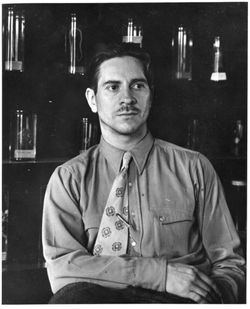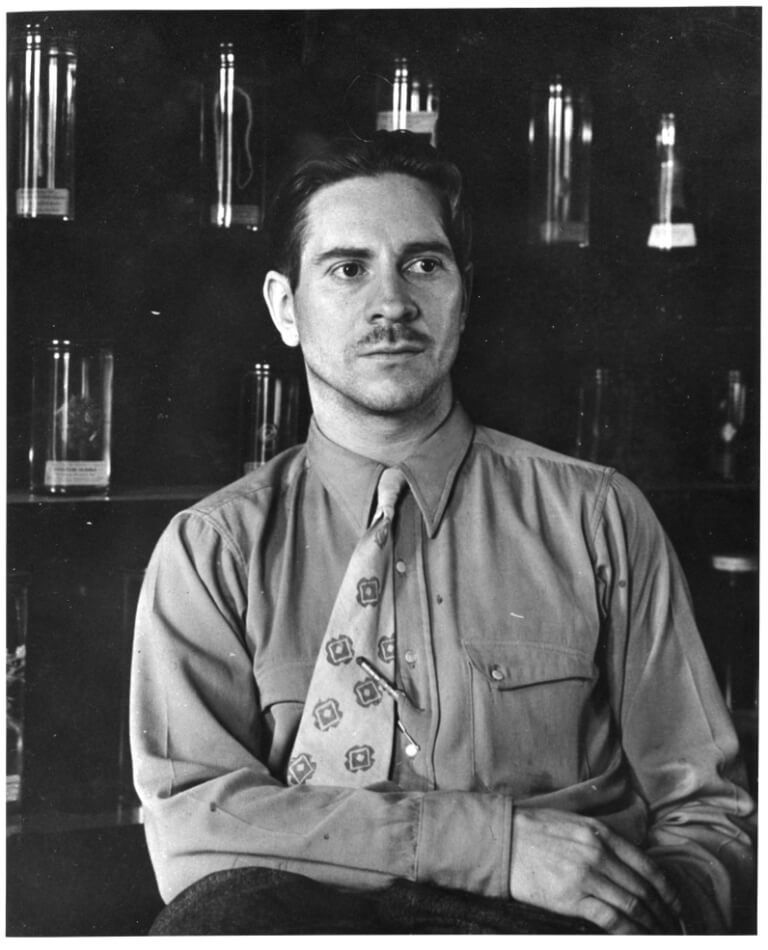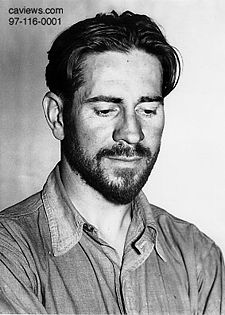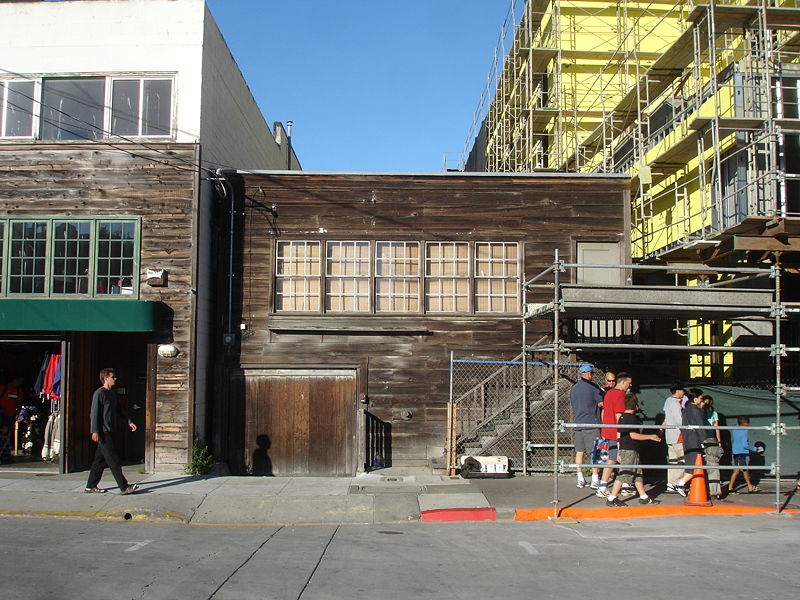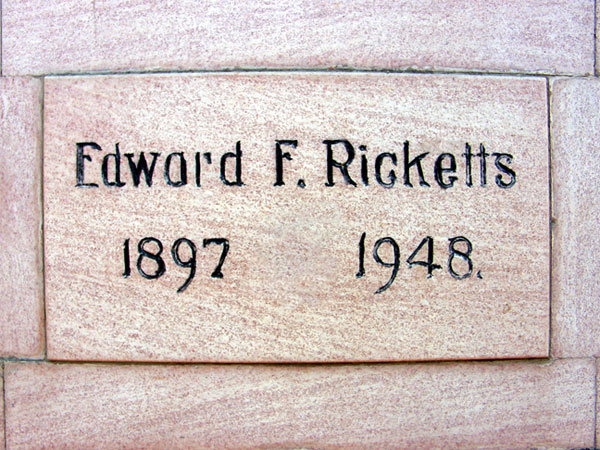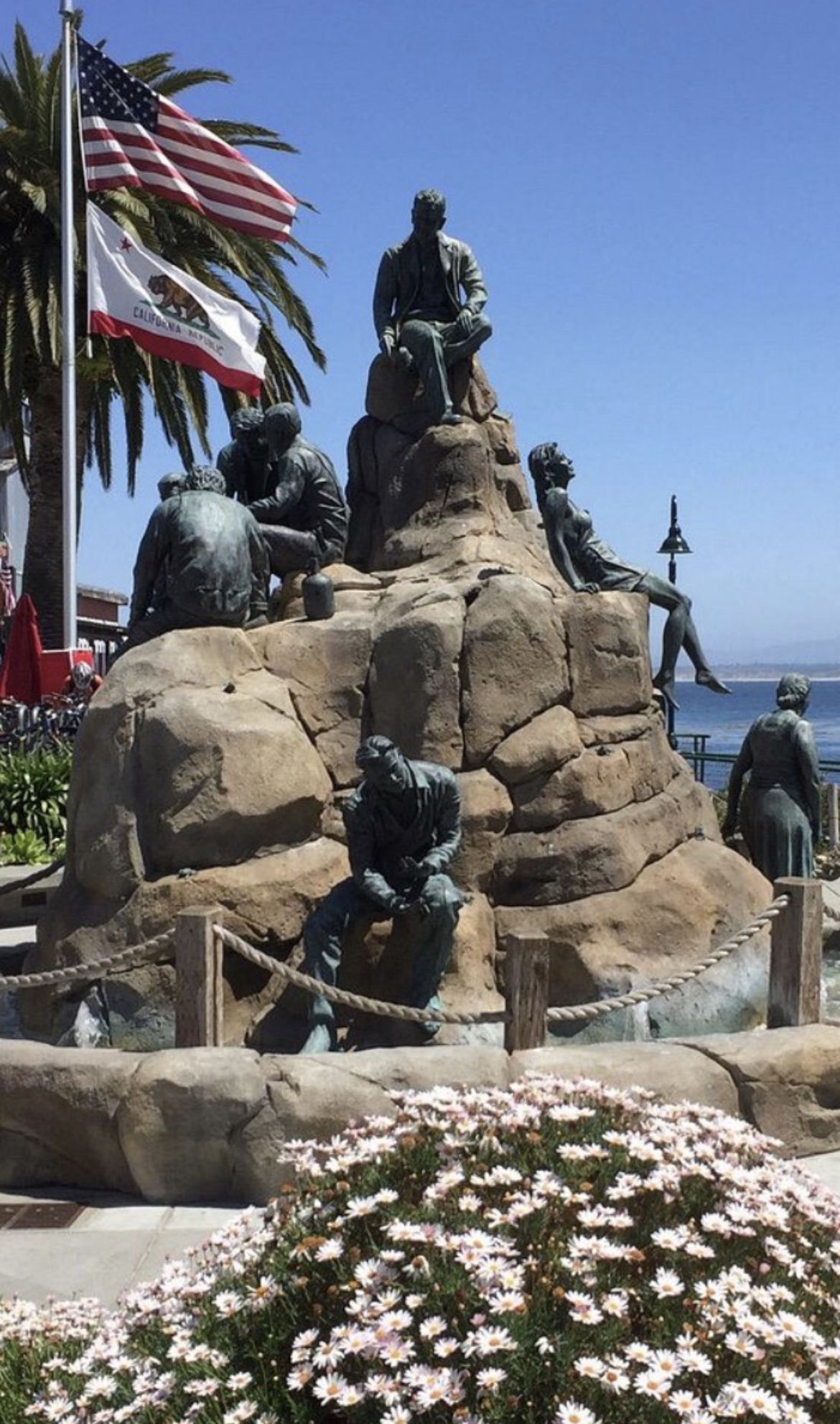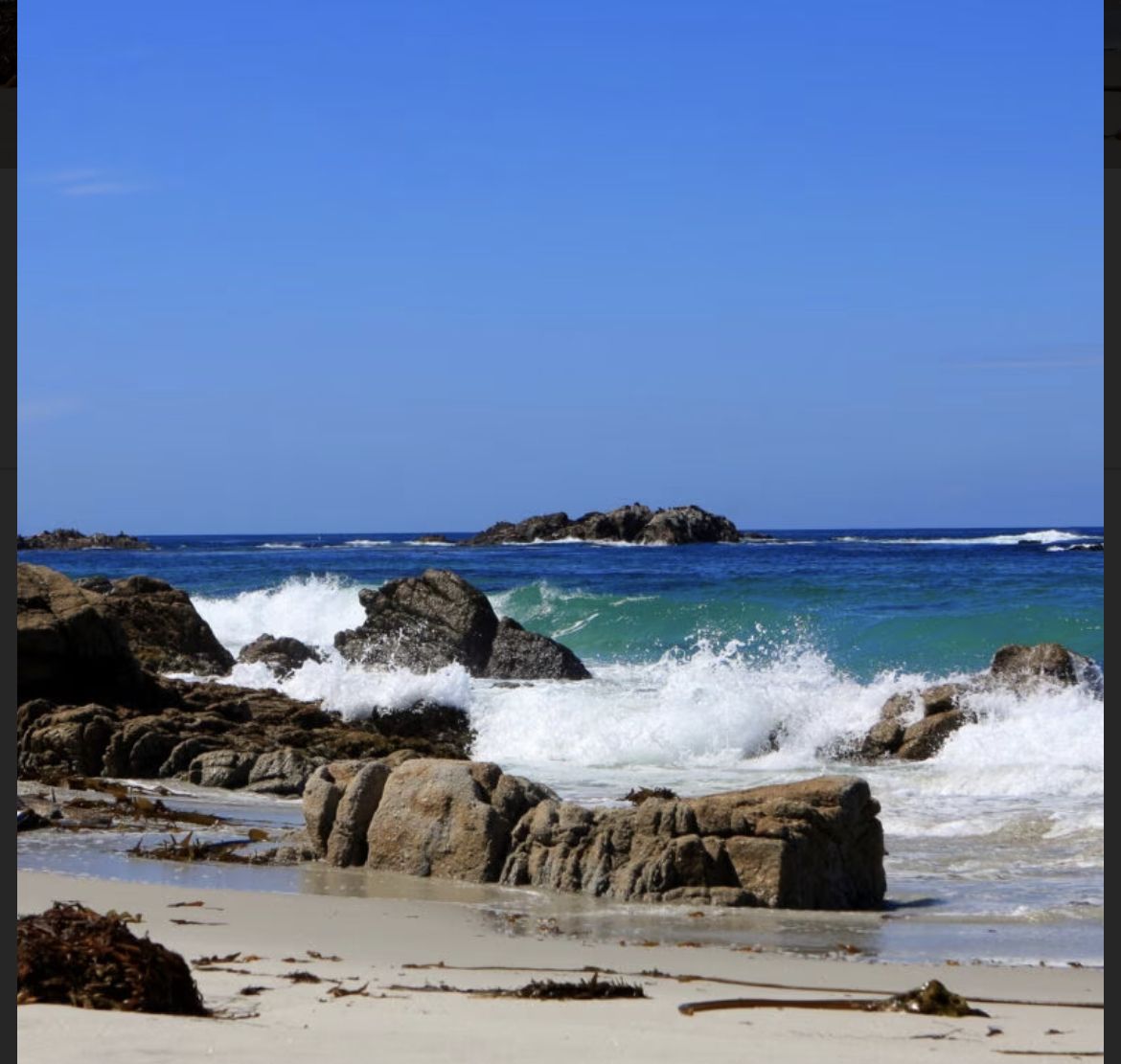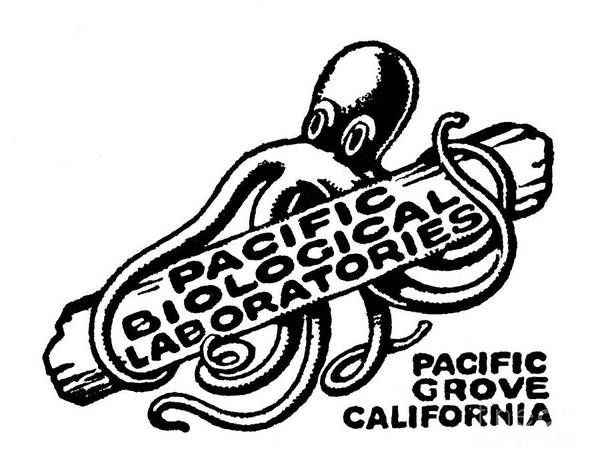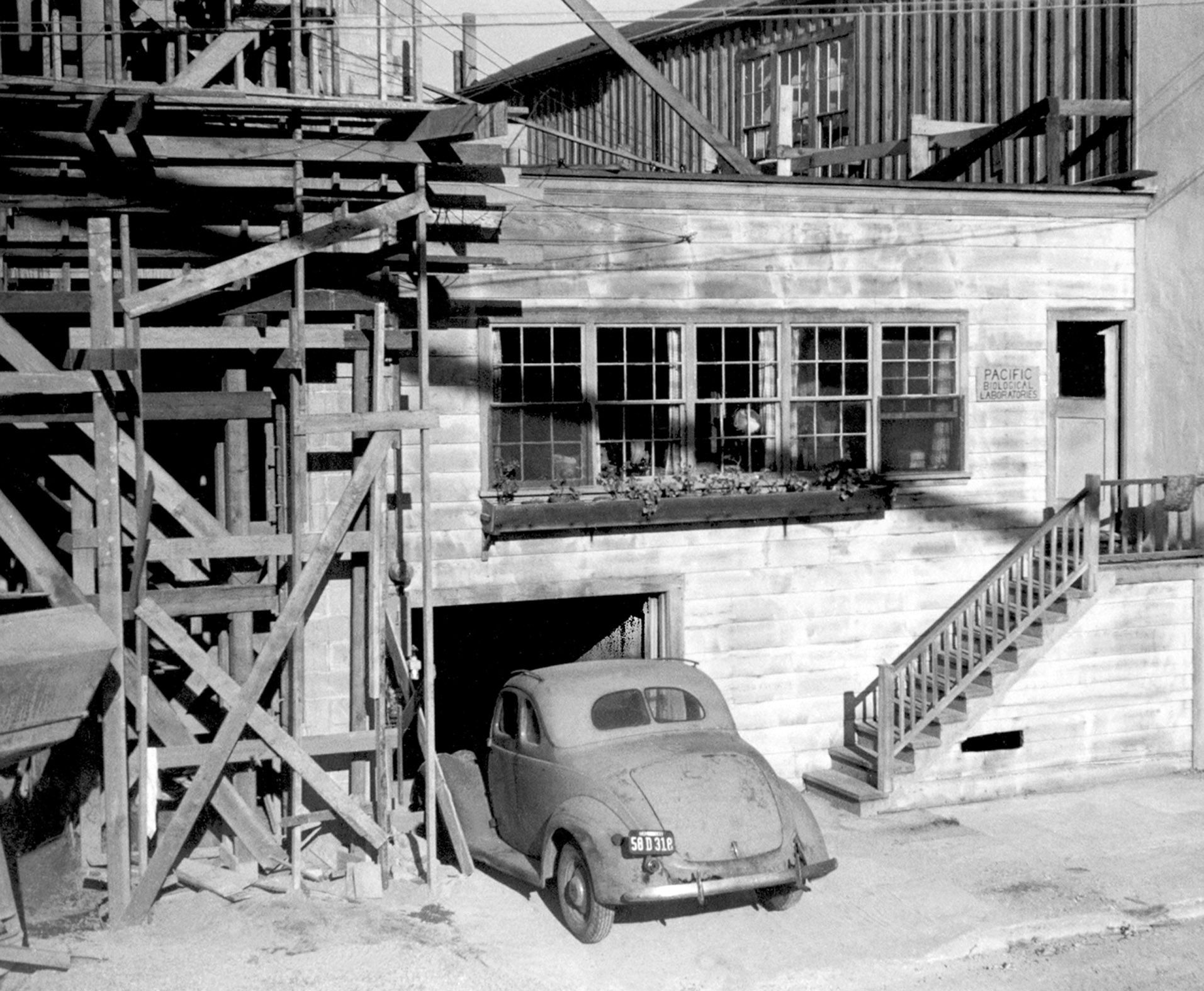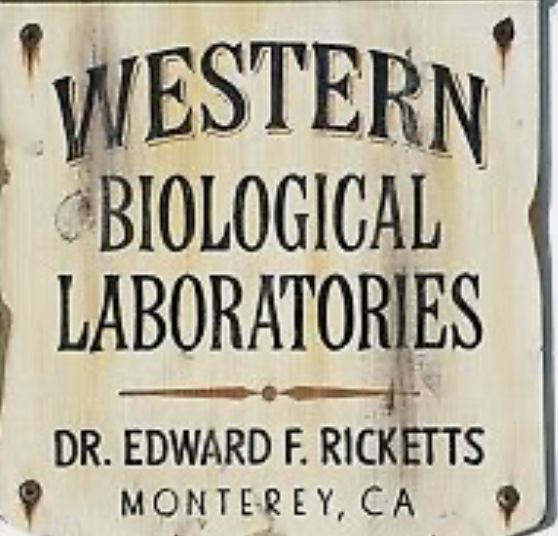After a year of college, he traveled to Texas and New Mexico. In 1917, Ricketts was drafted into the Army Medical Corps; he hated the military bureaucracy, but according to Steinbeck, "he was a successful soldier."
After being discharged from the army, Ricketts studied zoology at the University of Chicago and was influenced by his professor, W. C. Allee, but Ricketts dropped out without a degree. He then spent several months walking through the American south, from Indiana to Florida. He returned to Chicago and studied some more at the university. In 1922, Ricketts met and married Anna Barbara Maker, whom he called "Nan". A year later, they had a son, Edward F. Ricketts Jr., and they moved to California to set up Pacific Biological Laboratories with Albert E. Galigher: Galigher was Rickett's college friend with whom he had run a similar business on a smaller scale. In 1924, Ricketts became sole owner of the lab, and soon after two daughters were born: Nancy Jane in November 28, 1924, and Cornelia, on April 6, 1928.
His sister and both of his parents moved to California between 1925 and 1927; both Frances and Abbott worked with Ricketts in the lab. Nan left Ricketts in 1932, taking the children. It was the first of many separations. Ricketts and Nan separated for good in 1936, and he took up residence in his lab.
On November 25, 1936, a fire spread from the adjacent cannery and destroyed the lab. He lost nearly everything - including an extraordinary amount of correspondence, research notes, manuscripts, and his prized library, which had held everything from invaluable scientific resources to his beloved collection of poetry.
In 1940, Ricketts and Steinbeck journeyed to the Sea of Cortez (Gulf of California) in a chartered fishing boat to collect invertebrates for the scientific catalog in their book, Sea of Cortez. Also in 1940, Ricketts began a relationship with Toni Jackson. Jackson and her young daughter, Kay, moved in with Ricketts and lived with him until 1947.
During World War II, Ricketts again served in the army, this time as a medical lab technician; he was drafted into service in October 1942, missing the age cut-off by days. During his service, he kept collecting marine life and compiling data. His son was drafted in 1943.
In 1945, Steinbeck's novel Cannery Row was published. Ricketts, the real-life model for the character Doc, became a minor celebrity, and tourists and journalists began seeking him out. Steinbeck portrayed Doc (and, thus, Ricketts) as a many-faceted intellectual somewhat outcast from intellectual circles, a party-loving drinking man, and closely in touch with the working class, prostitutes, and bums of Monterey's Cannery Row. Regarding "Doc", Steinbeck wrote: "He wears a beard and his face is half Christ and half satyr and his face tells the truth."
Steinbeck's caricature was largely true, but incomplete and sometimes misleading. Ricketts himself read it with exasperation by all accounts, but ended by saying that it could not be criticized because it was not done with malice. [1] Ricketts was also portrayed as "Doc" in Sweet Thursday the sequel to Cannery Row; as "Doc Burton" in In Dubious Battle; Jim Casy in The Grapes of Wrath; and "Doctor Winter" in The Moon is Down.
In September 1946, Nancy Jane had a son, making Ricketts a grandfather. That same year, Kay's health deteriorated due to a brain tumor. She died on October 5, 1947. Toni, overwhelmed with grief, left Ricketts. Just a few weeks later, Ricketts met Alice Campbell, a music and philosophy student half his age. They "married" in early 1948, though the marriage was not valid because Ricketts had never become legally divorced from Nan.
On May 8, 1948, Ricketts was crossing the railroad tracks when his vehicle was hit by the Del Monte Express train at the Drake Avenue crossing just off Cannery Row. He lived on for three days, conscious at least some of that time, before dying on May 11.
A lifesize metal sculptured bust of Ricketts, placed at the site of the long defunct rail crossing, commemorates his life and times on Cannery Row in Monterey, California.
After a year of college, he traveled to Texas and New Mexico. In 1917, Ricketts was drafted into the Army Medical Corps; he hated the military bureaucracy, but according to Steinbeck, "he was a successful soldier."
After being discharged from the army, Ricketts studied zoology at the University of Chicago and was influenced by his professor, W. C. Allee, but Ricketts dropped out without a degree. He then spent several months walking through the American south, from Indiana to Florida. He returned to Chicago and studied some more at the university. In 1922, Ricketts met and married Anna Barbara Maker, whom he called "Nan". A year later, they had a son, Edward F. Ricketts Jr., and they moved to California to set up Pacific Biological Laboratories with Albert E. Galigher: Galigher was Rickett's college friend with whom he had run a similar business on a smaller scale. In 1924, Ricketts became sole owner of the lab, and soon after two daughters were born: Nancy Jane in November 28, 1924, and Cornelia, on April 6, 1928.
His sister and both of his parents moved to California between 1925 and 1927; both Frances and Abbott worked with Ricketts in the lab. Nan left Ricketts in 1932, taking the children. It was the first of many separations. Ricketts and Nan separated for good in 1936, and he took up residence in his lab.
On November 25, 1936, a fire spread from the adjacent cannery and destroyed the lab. He lost nearly everything - including an extraordinary amount of correspondence, research notes, manuscripts, and his prized library, which had held everything from invaluable scientific resources to his beloved collection of poetry.
In 1940, Ricketts and Steinbeck journeyed to the Sea of Cortez (Gulf of California) in a chartered fishing boat to collect invertebrates for the scientific catalog in their book, Sea of Cortez. Also in 1940, Ricketts began a relationship with Toni Jackson. Jackson and her young daughter, Kay, moved in with Ricketts and lived with him until 1947.
During World War II, Ricketts again served in the army, this time as a medical lab technician; he was drafted into service in October 1942, missing the age cut-off by days. During his service, he kept collecting marine life and compiling data. His son was drafted in 1943.
In 1945, Steinbeck's novel Cannery Row was published. Ricketts, the real-life model for the character Doc, became a minor celebrity, and tourists and journalists began seeking him out. Steinbeck portrayed Doc (and, thus, Ricketts) as a many-faceted intellectual somewhat outcast from intellectual circles, a party-loving drinking man, and closely in touch with the working class, prostitutes, and bums of Monterey's Cannery Row. Regarding "Doc", Steinbeck wrote: "He wears a beard and his face is half Christ and half satyr and his face tells the truth."
Steinbeck's caricature was largely true, but incomplete and sometimes misleading. Ricketts himself read it with exasperation by all accounts, but ended by saying that it could not be criticized because it was not done with malice. [1] Ricketts was also portrayed as "Doc" in Sweet Thursday the sequel to Cannery Row; as "Doc Burton" in In Dubious Battle; Jim Casy in The Grapes of Wrath; and "Doctor Winter" in The Moon is Down.
In September 1946, Nancy Jane had a son, making Ricketts a grandfather. That same year, Kay's health deteriorated due to a brain tumor. She died on October 5, 1947. Toni, overwhelmed with grief, left Ricketts. Just a few weeks later, Ricketts met Alice Campbell, a music and philosophy student half his age. They "married" in early 1948, though the marriage was not valid because Ricketts had never become legally divorced from Nan.
On May 8, 1948, Ricketts was crossing the railroad tracks when his vehicle was hit by the Del Monte Express train at the Drake Avenue crossing just off Cannery Row. He lived on for three days, conscious at least some of that time, before dying on May 11.
A lifesize metal sculptured bust of Ricketts, placed at the site of the long defunct rail crossing, commemorates his life and times on Cannery Row in Monterey, California.
Family Members
Sponsored by Ancestry
Advertisement
Records on Ancestry
Advertisement
